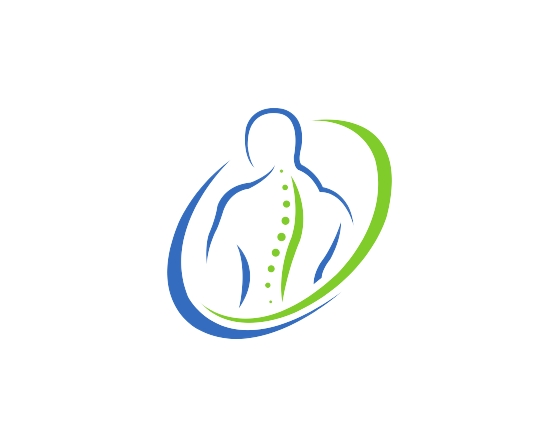Back pain is a common issue that affects a significant portion of the population. While there are many causes of back pain, such as injury or nerve issues, it can also be caused by muscle spasms and tension.
And while there are many ways to manage and treat back pain, muscle relaxants can help alleviate these symptoms by reducing muscle contractions and promoting relaxation.
In this article, you’ll learn about the different types of muscle relaxants and their effectiveness in relieving back pain. We’ll also explore how they work, their side effects, and how to choose the right muscle relaxant for your specific needs.
Muscle Spasms Vs. Muscle Spasticity
Muscle relaxers, often known as muscle relaxants, are drugs used to manage muscle spasticity or spasms.
Muscle cramps or spasms are abrupt, involuntary contractions of one or more muscles. They might result from excessive muscle strain and discomfort. They have been linked to ailments like fibromyalgia, neck discomfort, and lower back pain.
On the other hand, muscle spasticity is a persistent muscle spasm that results in tightness, rigidity, or stiffness and can hinder regular walking, talking or movement.
Injury to the brain or spinal cord regions responsible for movement causes muscle spasticity. Muscle spasticity can be brought on by multiple sclerosis (MS), cerebral palsy, and amyotrophic lateral sclerosis (ALS), among other illnesses.
Prescription Medications
Prescription medications can aid in reducing the discomfort and pain caused by muscle spasms or spasticity. You may also treat the aches and pains brought on by muscle spasms with some over-the-counter medicines.
Antispasmodics and antispastics are two categories of prescription medications. In addition to your pain medication, your doctor may recommend a muscle relaxant if your pain doesn’t disappear.
You can treat muscle spasticity with antispastics, while you can treat muscle spasms with antispasmodics. You may treat muscle spasticity with antispasmodic medications like tizanidine. However, you shouldn’t treat muscle spasms with antispastics.
Antispasmodics: Centrally Acting Skeletal Muscle Relaxants
In addition to sleep and physical treatment, centrally-acting SMRs are suggested to reduce muscle spasms.
They may function by having a soothing effect or obstructing the transmission of pain signals from your nerves to your brain.
Here are some typical antispasmodics. Keep in mind that these drugs typically treat severe muscle spasms.
1. Carisoprodol (brand name: Soma)
Carisoprodol is one of the centrally-acting skeletal muscle relaxants to treat severe, excruciating muscle problems.
The dosage for carisoprodol, which is available as tablets, is 250–300 mg. It is advised for adults and teenagers at least 16 years old.
The usual recommendations call for taking it three times daily and before night. You should take carisoprodol for only two to three weeks because it can become habit-forming.
Doctors also caution patients against consuming alcohol while taking this medicine.
2. Chlorzoxazone (brand names: Lorzone, Parafon Forte DSC)
Chlorzoxazone is a skeletal muscle relaxant used to treat acute muscular strains, such as those in the back. Adults usually take 500 mg three or four times a day of the pill form of this medication.
Reddish or purple urine is one of the adverse effects of chlorzoxazone. It’s a natural side effect of the medicine and has nothing to worry about.
3. Cyclobenzaprine (brand names: Flexeril, Amrix, Fexmid)
Another skeletal muscle relaxant, cyclobenzaprine, can be used in conjunction with sleep and physical therapy to relieve muscle spasms brought on by acute muscle problems.
The dosage forms include tablets, suspensions, and extended-release capsules. Typically, doctors recommend taking 5 mg three times a day. Some individuals, however, need higher doses, such as 7.5 to 10.0 mg three times daily. The daily maximum is 30 mg.
No one with specific heart disorders, such as heart failure, a recent heart attack, or some type of arrhythmia, should use cyclobenzaprine.
4. Metaxalone (brand names: Skelaxin, Metaxall)
Metaxalone is a centrally-acting muscle relaxant that is often taken in tablets. Doctors recommend metaxalone, relaxation, physical therapy, and other non-drug treatment options for severe muscle conditions.
The suggested dosage is 800 mg for those over twelve, taken three to four times per day. The most frequent adverse effects of metaxalone are drowsiness, irritability, and stomach or intestinal problems.
Due to the possibility of serotonin syndrome, you cannot use it with medications that change the body’s serotonin levels.
5. Methocarbamol (brand name: Robaxin)
Methocarbamol, similar to the other drugs, is a centrally acting skeletal muscle relaxant to relieve muscle spasms.
A typical dosage is 1500 mg daily, broken down into three 500 mg tablets or two 750 mg tablets.
It is crucial to use this and other muscle relaxants precisely as your doctor prescribes due to the relatively lengthy list of potential adverse effects.
6. Orphenadrine (brand name: Norflex)
Orphenadrine is a medication that stops the neurotransmitter acetylcholine and also relaxes muscles.
Orphenadrine is frequently used to reduce Parkinson’s disease-related symptoms because of its anticholinergic characteristics.
A standard daily dose is 200mg to 250 mg, consumed twice or three times per day.
Antispastics for Muscle Spasticity
If your muscle spasticity is caused by a neurological disorder, such as a spinal cord injury, you are more likely to be recommended an antispastic.
Remember that you can’t routinely treat the occasional muscle spasm with these medications.
1. Baclofen (brand names: Ozobax, Lioresal, Gablofen)
Baclofen is a medication used to treat persistent neurogenic diseases that produce spasticity, including multiple sclerosis or spinal cord injury. Although its exact process is unknown, it appears to disrupt the spinal cord’s nerve signals that trigger muscle spasms.
Typically, doctors advise taking three 5 mg tablets every day. The maximum daily oral dose is 80 mg. If an intrathecal injection is necessary, 50 micrograms (mcg) is given. The doctor will change the dosage if there is a reaction to the medication.
Doctors may advise taking baclofen orally or in the intrathecal form. The latter method involves administering the medication by spinal canal injection. Drowsiness, lightheadedness, achiness, and weakness are possible side effects.
2. Dantrolene (brand names: Dantrium, Revonto, Ryanodex)
Dantrolene treats muscle spasms brought on by cerebral palsy, spinal cord damage, stroke, and multiple sclerosis. To reduce muscle spasms, it mainly concentrates on the skeletal muscle.
Doctors may advise patients with muscle spasticity for seven days to take 25 mg of dantrolene daily. Depending on the patient’s response, they might then raise the dosage. The daily dose limit is 400 mg. There is also IV dantrolene available.
Drowsiness, wooziness, lightheadedness, and fatigue are possible side effects. Changes in breathing caused by weakened respiratory muscles and muscle weakness are among IV dantrolene’s adverse effects. Dantrolene used orally may also harm the liver.
3. Tizanidine (brand name: Zaniflex)
Tizanidine contains antispasmodic as well as antispastic properties. This skeletal muscle relaxant is frequently used to alleviate spasticity brought on by multiple sclerosis or spinal cord injury and treat muscular spasms.
This autoimmune disorder, a close relative of transverse myelitis, targets the fatty, insulating myelin sheaths surrounding some of your nerve cells.
Doctors may recommend 2 or 4 mg tablets or capsules with 2, 4, or 6 mg. Tizanidine can be taken as needed every 6 to 8 hours.
Off-Label Medications for Spasticity
Even if the U.S. Food and Drug Association (FDA) has not approved a medication for treating spasticity, doctors may still prescribe it. It is referred to as off-label drug consumption.
The following medications can still aid in reducing spasticity symptoms even though they are not antispasmodics and antispastics.
1. Benzodiazepines
Benzodiazepines, also known as “benzos,” include oxazepam and diazepam (Valium), sedatives typically used to treat anxiety but are also frequently used to relieve back pain and muscular spasms.
These medications reduce nervous system activity by enhancing the actions of specific neurotransmitters, which communicate between your brain cells.
Examples of benzodiazepines include:
- Clonazepam (Klonopin)
- Alprazolam (Xanax)
- Lorazepam (Ativan)
In addition to drowsiness, benzodiazepines can also cause balance and memory issues. Benzodiazepines are also addicting and involve the threat of overdosing.
Make sure you only consume them strictly as prescribed by your doctor.
2. Gabapentin (brand names: Gralise, Horizant, Neurontin)
Gabapentin is an anticonvulsant medication that treats epileptic seizures and restless legs syndrome. It is typically used to alleviate nerve discomfort and lessen pain reactions brought on by muscle spasticity.
Drowsiness, exhaustion, and headache are just a few of the adverse effects that gabapentin may have.
Warnings for Prescription Muscle Relaxants
Muscle relaxants have the potential to become addictive. Be careful to take your prescription exactly as your doctor has instructed.
Seizures and hallucinations (feeling unreal things) are two withdrawal symptoms that muscle relaxants can also cause. If you’ve been taking your prescription for a while, don’t stop taking it suddenly.
Additionally, muscle relaxants lower your central nervous system (CNS), making it difficult to focus or maintain awakeness.
Avoid engaging in tasks that require mental focus or concentration when taking a muscle relaxant, such as operating heavy equipment or driving a car.
You shouldn’t take muscle relaxants with:
- Alcohol
- CNS depressants, like opioids and psychotropic medications
- Sleeping pills
- Supplements made from herbs like St. John’s wort
If any of the following apply, consult your doctor about using muscle relaxants safely:
- Are over the age of 65
- Have a brain illness or mental health issue
- A liver condition
When to Contact Your Doctor
Muscle spasms are one of the most likely reasons for back pain to heal spontaneously or to go off by themselves within two weeks.
If your discomfort persists for more than two weeks, consult a spine specialist or your general healthcare physician.
Other circumstances in which you might seek advice from your doctor include:
- You have never experienced spasticity before, and the cause is unknown.
- The spasticity is becoming more evident, occurring more frequently, or challenging tasks.
- Recurrent and severe muscular spasms.
- See any deformities in the areas of your body where muscular spasms have occurred.
- Experiencing adverse effects from your muscle relaxant.
- You have a contracture that limits your range of motion or results in pressure sores, resulting in a rigid joint.
- Suffer from escalating discomfort or pain.
Bottom Line
Muscle relaxants may be a helpful therapy choice to relieve your muscle spasms if your muscular discomfort does not react to over-the-counter drugs.
You should consider muscle relaxants as a component of a therapeutic intervention that may also involve light stretching, physical therapy, and exercise to achieve the best outcomes.
Always feel free to talk to your doctor about your prescriptions and a detailed spine health plan. A powerful source of protection against back pain is a thorough grasp of your treatment alternatives.


